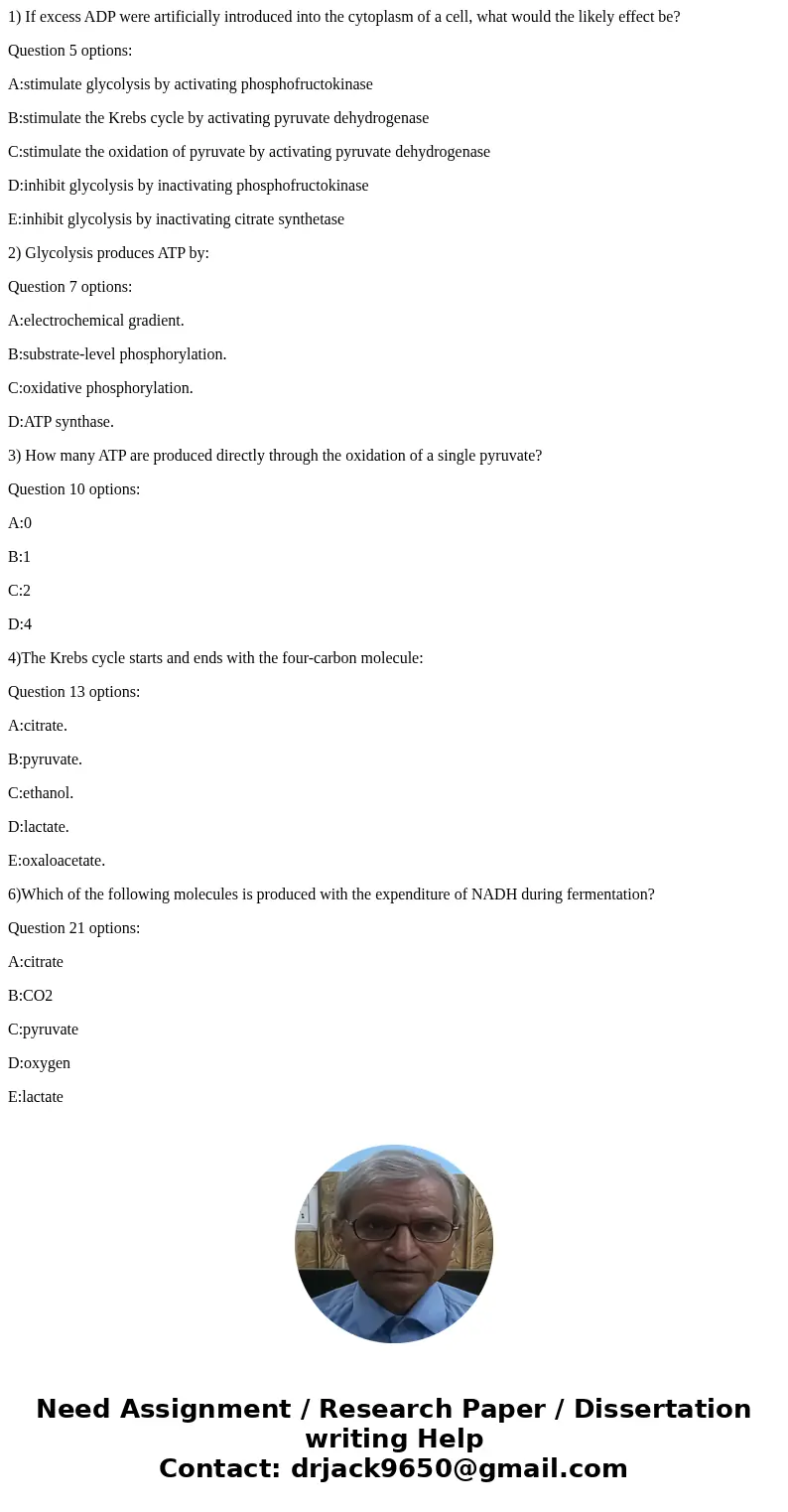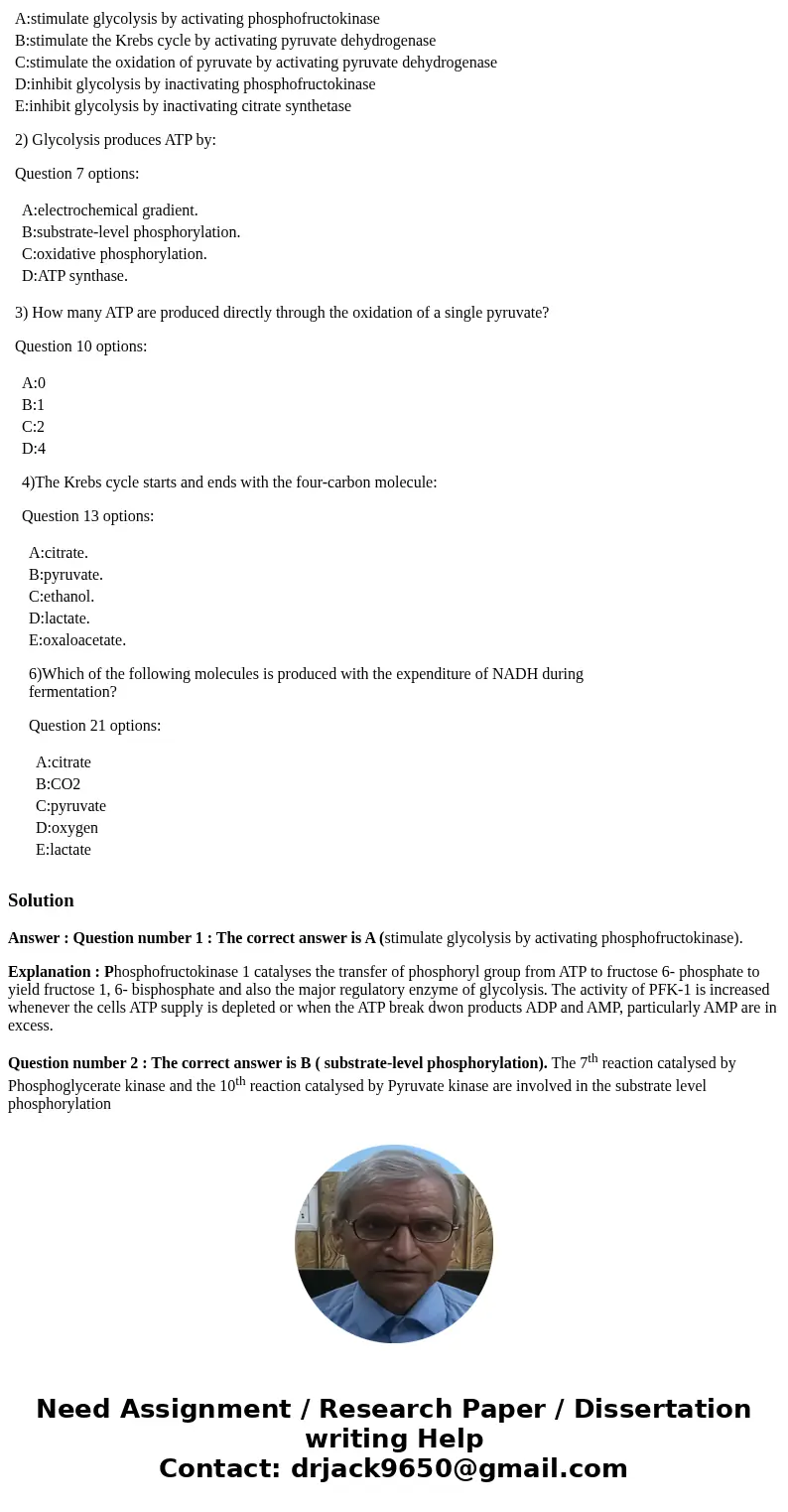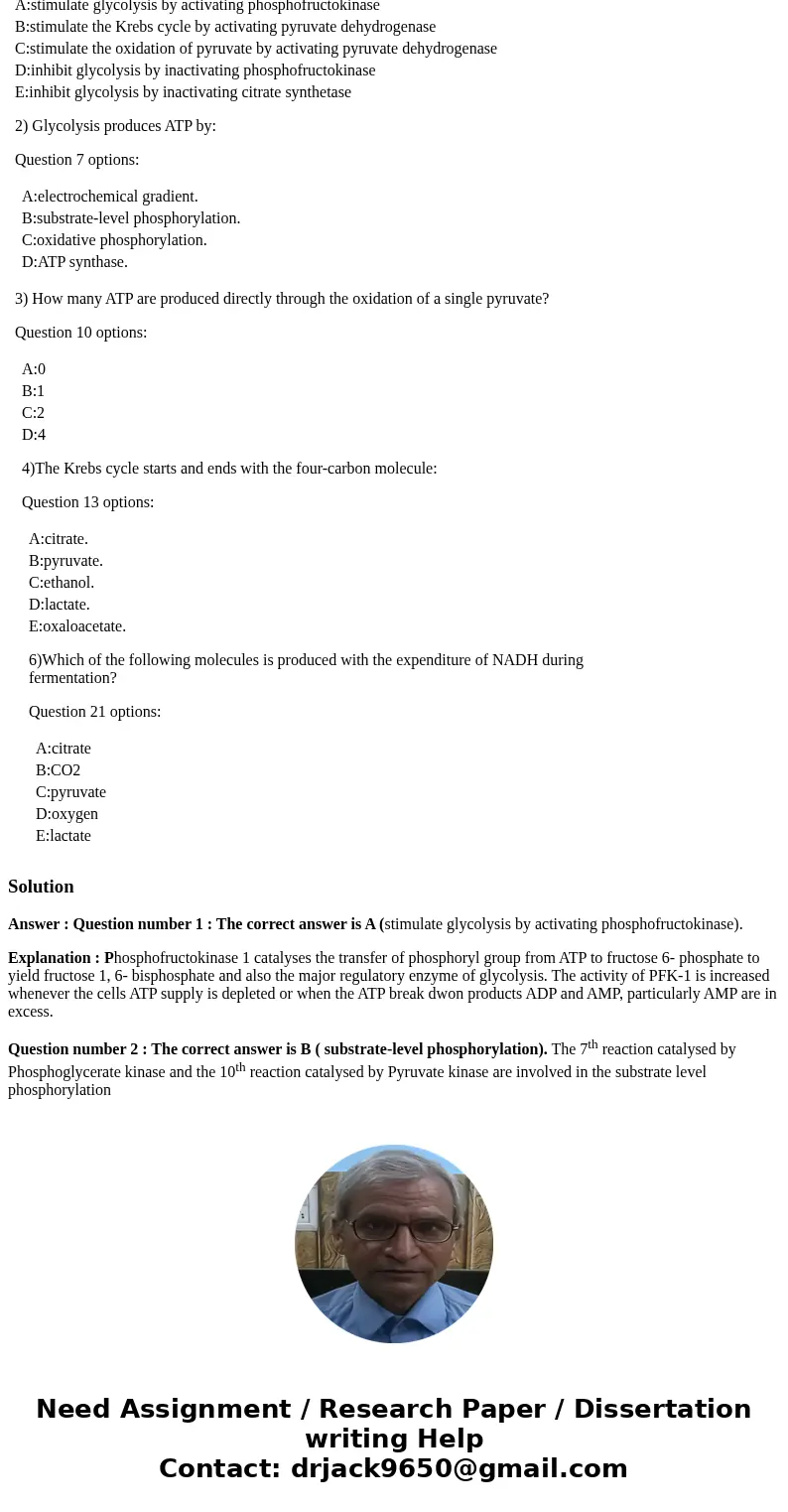1 If excess ADP were artificially introduced into the cytopl
1) If excess ADP were artificially introduced into the cytoplasm of a cell, what would the likely effect be?
Question 5 options:
A:stimulate glycolysis by activating phosphofructokinase
B:stimulate the Krebs cycle by activating pyruvate dehydrogenase
C:stimulate the oxidation of pyruvate by activating pyruvate dehydrogenase
D:inhibit glycolysis by inactivating phosphofructokinase
E:inhibit glycolysis by inactivating citrate synthetase
2) Glycolysis produces ATP by:
Question 7 options:
A:electrochemical gradient.
B:substrate-level phosphorylation.
C:oxidative phosphorylation.
D:ATP synthase.
3) How many ATP are produced directly through the oxidation of a single pyruvate?
Question 10 options:
A:0
B:1
C:2
D:4
4)The Krebs cycle starts and ends with the four-carbon molecule:
Question 13 options:
A:citrate.
B:pyruvate.
C:ethanol.
D:lactate.
E:oxaloacetate.
6)Which of the following molecules is produced with the expenditure of NADH during fermentation?
Question 21 options:
A:citrate
B:CO2
C:pyruvate
D:oxygen
E:lactate
| A:stimulate glycolysis by activating phosphofructokinase | |||||||||||||||||||||||||||||||||||||
| B:stimulate the Krebs cycle by activating pyruvate dehydrogenase | |||||||||||||||||||||||||||||||||||||
| C:stimulate the oxidation of pyruvate by activating pyruvate dehydrogenase | |||||||||||||||||||||||||||||||||||||
| D:inhibit glycolysis by inactivating phosphofructokinase | |||||||||||||||||||||||||||||||||||||
| E:inhibit glycolysis by inactivating citrate synthetase 2) Glycolysis produces ATP by: Question 7 options:
3) How many ATP are produced directly through the oxidation of a single pyruvate? Question 10 options:
|
Solution
Answer : Question number 1 : The correct answer is A (stimulate glycolysis by activating phosphofructokinase).
Explanation : Phosphofructokinase 1 catalyses the transfer of phosphoryl group from ATP to fructose 6- phosphate to yield fructose 1, 6- bisphosphate and also the major regulatory enzyme of glycolysis. The activity of PFK-1 is increased whenever the cells ATP supply is depleted or when the ATP break dwon products ADP and AMP, particularly AMP are in excess.
Question number 2 : The correct answer is B ( substrate-level phosphorylation). The 7th reaction catalysed by Phosphoglycerate kinase and the 10th reaction catalysed by Pyruvate kinase are involved in the substrate level phosphorylation



 Homework Sourse
Homework Sourse